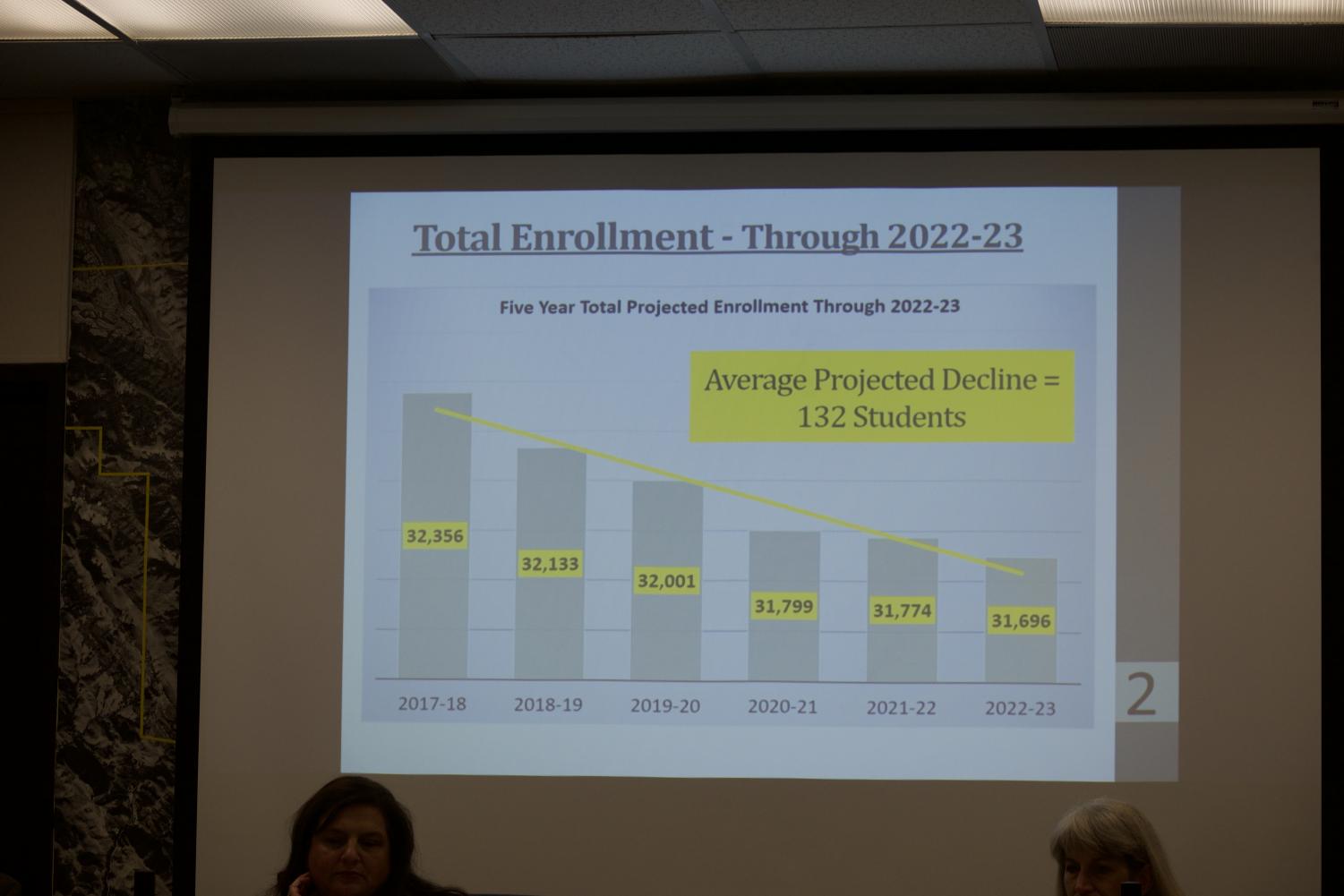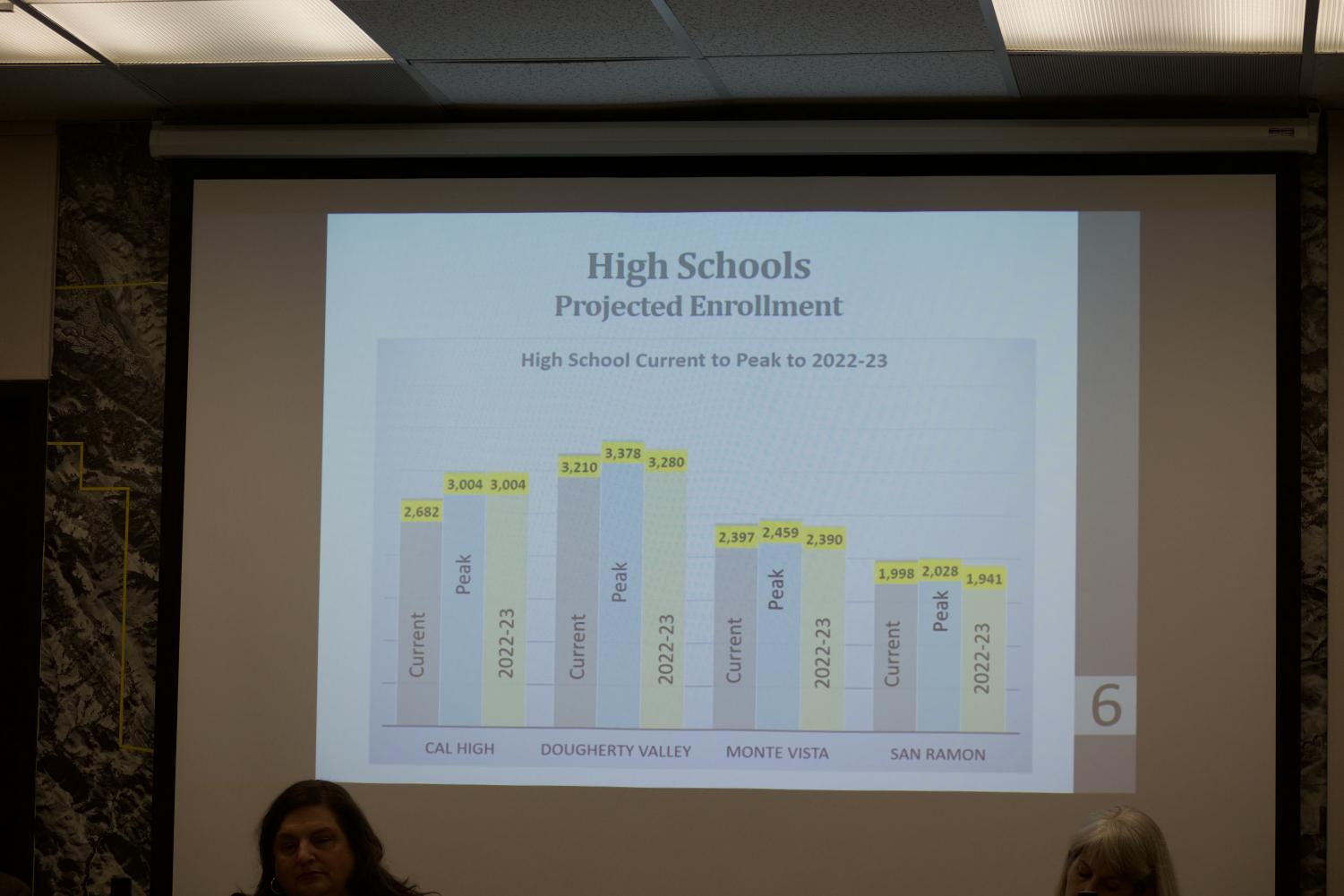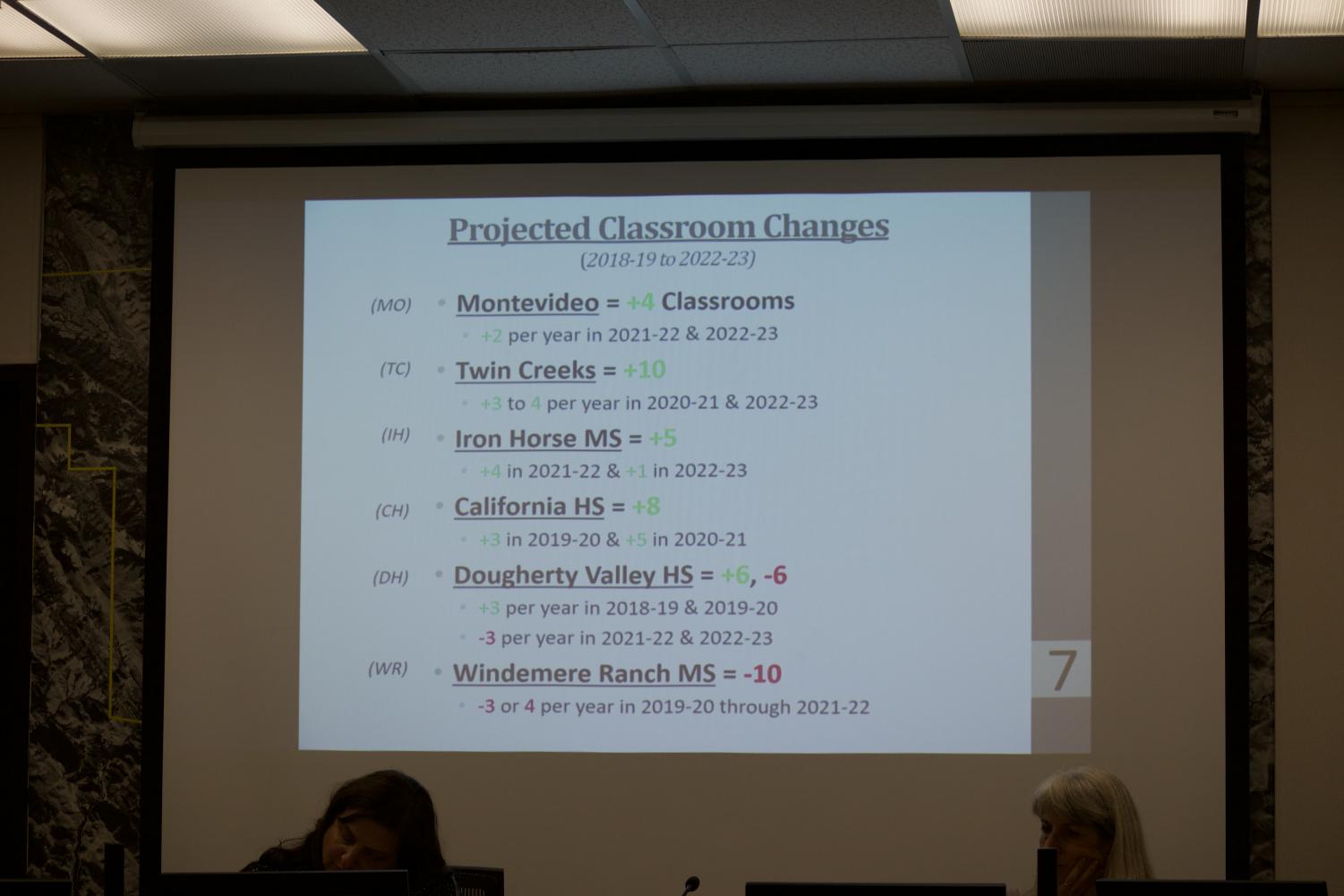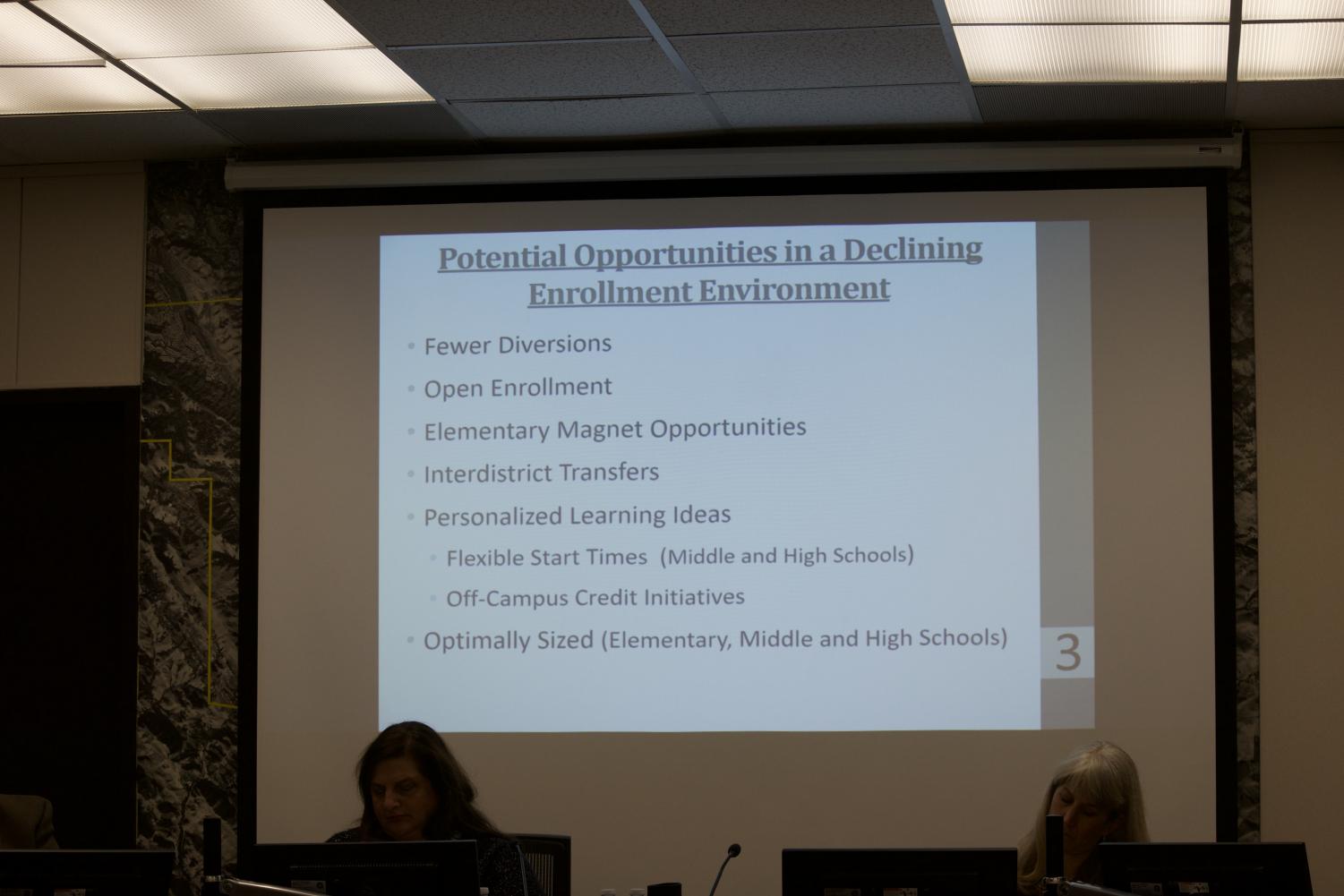SRVUSD school board discusses graduation requirements, facilities, instructional calendars
January 10, 2018
During last night’s San Ramon Valley Unified School District board meeting, board members approved and discussed many miscellaneous proposed changes, including changes in district facilities, the approved Instructional Calendars for the following two school years and revisions of graduation requirements.
To start off the meeting, the board heard a student board member report from a California High School leadership student, a report on National School Counseling Week and Words Matter Week (both Feb. 5-9), comments by Ann Katzburg, the president of the San Ramon Valley Education Association and a brief statement of appreciation to the board by Superintendent Rick Schmitt.
Dougherty Valley High School sophomore and one of the Wildcat Tribune’s Arts and Entertainment editors, Kavin Kumaravel, then took to the podium to ask for an apology from board member Greg Marvel because of a comment he made at the meeting on Dec. 12, 2017 — about a recent tragedy that occurred at Dougherty Valley— that offended many students and teachers.
Later during the Jan. 9 meeting, Marvel responded to Kumaravel’s comment, clarifying what he had meant to express at the last meeting and “apologiz[ing] for those people that were hurt or offended by [his] comments.”
Following Kumaravel’s speech, Gary Black, Assistant Superintendent Facilities & Operations, gave a report on facilities in the district, notably about the district’s projected enrollment in future years. Dougherty Valley High School, which has a current student population of 3210, is expected to reach its population peak at 3378 students and fall to 3280 in the 2022-23 school year. In the 2018-2019 school year, Dougherty is expected to add three classrooms each school year in 2018-19 and 2019-20 and decrease its number of classrooms by three each school year in 2021-22 and 2022-23.
After Black’s report, the board proceeded to approve several action items, one of which included approving the 2018-2019 and 2019-2020 Instructional Calendars.
On Dec. 12, the SRVUSD Board of Education received draft Instructional Calendars for the 2018-19 and 2019-20 school years. The final drafts of the calendars were developed in collaboration with the San Ramon Valley Education Association and based on feedback from an Instructional Calendar Survey that was sent out.
Instructional Calendar Information
Source: SRVUSD Website
Important dates to note for 2018-2019:
First Day of School: August 13, 2018
Winter Break: December 21, 2018 to January 4, 2019
Spring Break: April 1-5, 2019
Last Day of School: May 31, 2019
Important dates to note for 2019-2020:
First Day of School: August 13, 2019
Winter Break: December 23, 2019 to January 3, 2020
Spring Break: April 6-10, 2020
Last Day of School: May 29, 2020
During community member Monica Miller’s public comment on this agenda item, she expressed her frustration with the fact that the board did not release the results of the Instructional Calendar Survey to the public, also voicing her concerns with the first day of school being on a Monday, elementary schools changing from a trimester to semester grading period, the large time gap between Winter Break and Spring Break and more. Nevertheless, the board approved the action item unanimously.
Afterwards, board members began their first reads of several new policies, discussing the revision of high school graduation requirements and alternate credits toward graduation, both of which have been the topic of much discussion at past meetings about the district’s proposed personalized learning initiatives, as well as the assessment of student achievement.
Regarding the issue of revising graduation requirements, several students from Dougherty Valley High School and San Ramon Valley High School spoke out against the removal of World Geography and Health as graduation requirements, something that board members had considered at previous meetings. At this point, Board Director Ken Mintz clarified that after hearing many of the community’s passionate comments on this issue, board members had already decided that Health and World Geography would remain graduation requirements for the next school year.
In an update sent out by the district on Dec. 19, 2017, the board also informed the community that it had revised several of its stances on the personalized learning initiatives after the discussions and comments at the Dec. 12, 2017 meeting.
According to the update, “the District will maintain the 7th period option for grades 9-12 and use the 2018-2019 school year to examine the implementation of the other ideas and their impact on class sizes” and “no changes will be made to the middle school world language program for 2018-2019. The District will engage world language teachers in further conversation on this idea over the coming school year.”
What the board did discuss last night was the reduction of total mandated graduation credits from 240 to 220 by dropping the required elective credits from 80 to 60. Although student speakers and parents in the community have expressed concerns that this would make high schools in the district less competitive, board members insisted that the opposite is true, citing examples of high-achieving school districts, such as the Palo Alto School District, that mandate only 220 credits.
Schmitt also noted that universities “don’t judge students based on what they may be able to do, above and beyond the requirements … In fact, many universities now are asking students to consider even less and focusing more on very specific outside courses and test scores, to really represent how they present themselves to universities.”
Board members respond to concerns regarding reduction of graduation requirements
However, the board emphasized that high school students will still have the ability and option to take up to 280 credits on campus if they wish.
They also stated that with the initiative concerning alternate credits toward graduation, students would be able to receive credit for graduation requirements at a community or state college, or at a public, private or online institution. The caveat however is that students can transfer no more than 40 credits from these institutions, excluding heritage schools and CollegeConnect, onto their high school transcripts.
The initiative would also change the minimum school day for middle and high school students to a mandated 240 minutes, whereas currently, the requirement is that students must be enrolled in six classes at all times, at least four of which must be district courses.
To guarantee that students are effectively advised in deciding what course loads and educational paths to take in high school to fulfill their 220 graduation requirements, despite their potential less time on campus, the board also suggested facilitating more communication between students, school counselors and parents.
Last, Toni Taylor, Deputy Superintendent: Educational Services, presented the first reading of a revision to the district policy regarding the assessment of student achievement that would decrease the number of weeks high school students have to drop a course from six weeks to three weeks but also offers students the option to drop a course at the beginning of the second semester. This revision received unanimous support from all board members.
The board is set to officially vote on the initiatives about revising graduation requirements and alternate credits toward graduation at the board meeting on Jan. 30, which will start at 7 p.m.





